Maintaining correct tire inflation pressure is very important since it helps optimize tire performance and fuel economy while over-inflated tires are just as problematic as under-inflated ones.
In fact, driving with under-inflated tires is one of the biggest causes of tire failure, according to the National Highway Traffic Safety Administration.
Besides, under-inflated tires can cause many other problems such as wearing out more rapidly, handling poorly and reducing fuel efficiency.
In addition, over-inflated tires are more susceptible to damage from road irregularities, and this also creates a bumpier ride.
Overfilling your tires is just as dangerous as under-filling them, so it’s important you know what is recommended for your vehicle.
This article will give you everything that you need know about your recommended tire pressure. These include:
Buy Pressure Gauge at Amazon
Recommended tire pressure, where to find it?Since tire pressure is so important to your safety and your car’s overall performance, it is important to know which level of tire pressure is right for your vehicle.
In fact, how much air pressure your tires need depends on several factors, including the type of vehicle, the type of tire and the intended use of the vehicle etc.
Air pressure in tires is measured in pounds per square inch or PSI. You can find your tire pressure both inside your car and on the sidewall of the tire.
How to find recommended tire pressure inside your carYou could find the manufacturer’s optimum or recommended tire pressure for your car on a sticker in the door jam, or in your owner’s manual. Some car models even place the stickers on the trunk lid, in the console or on the fuel door. For best results, look for a placard on the inside of the driver’s door, like the example in the photo below.
How to find maximum tire pressure on the sidewall of your tiresSomewhere on the sidewall of your tire, just below the big, bold letters of the manufacturer, for example, you might have noticed the words ‘Max.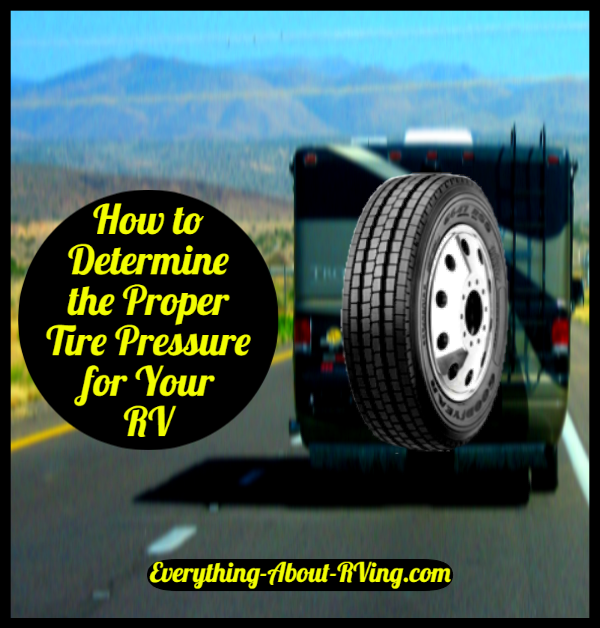 Press. 35 PSI.’ (pounds per square inch).
Press. 35 PSI.’ (pounds per square inch).
That number tells you the maximum cold pressure needed for your tire to carry its maximum load.
Most typical tires require about 32 to 35 pounds per square inch (PSI) of air, says Rod Tate, owner of highly rated Colony One Auto Center in Stafford, Texas.
Large trucks require much larger tires with PSIs of 50 to 60. Heavy-duty vehicles can go even higher. For example, tire in the picture below requires 41 pounds per square inch of air.
However, the tire’s maximum pressure is NOT necessarily the most suitable pressure for every vehicle upon which the tire can be used (almost all vehicle manufacturers’ recommended tire inflation pressures are less than the tires’ maximum pressure).
You really should follow the recommended pressure printed somewhere inside your car or in the manual rather than the maximum pressure. In the next section, I will explain why.
Buy Pressure Gauge at Amazon
Why is maximum tire pressure not the best?If you insist on inflating your tires to the max PSI, there will be more likely that two things below will happen
Since tires inflated to the max cannot give as much on the sidewall, you might see superior cornering, but it could be at the risk of your braking threshold.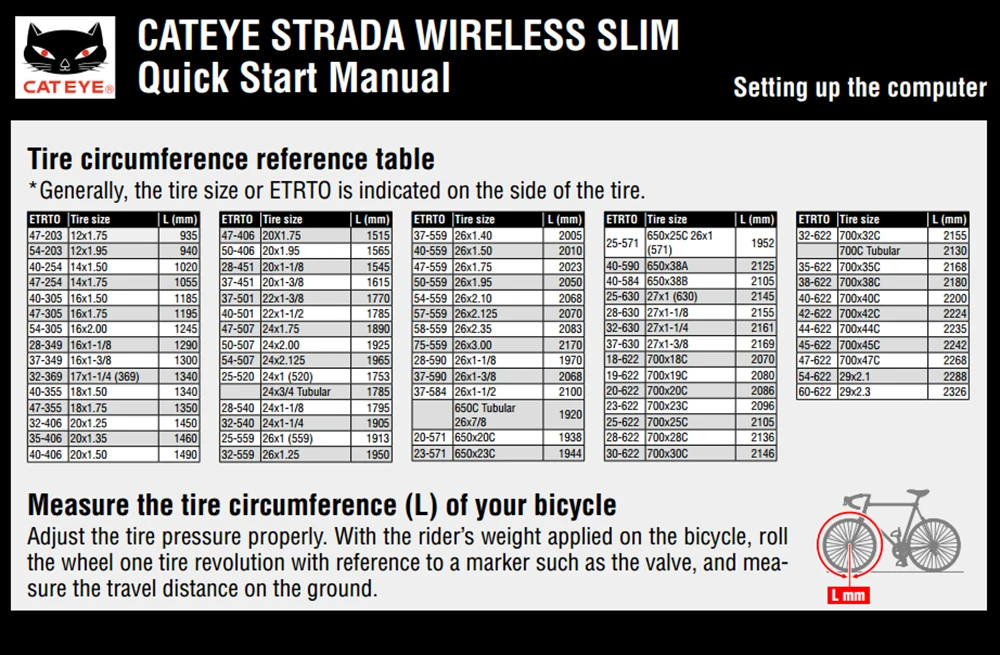 One quick corner and your back end could slide out.
One quick corner and your back end could slide out.
When your tires are inflated too much, the rubber rounds out at the top of the tire when you are driving, and the center will quickly wear out. You will also reduce your traction and you could even cause a blowout.
Therefore, maximum pressure is not the best, rather, recommended pressure is. I need to repeat here that the pressure listed on the sidewall is a maximum pressure only, but not a recommended pressure. Instead, you should use the air pressure recommended in the vehicle’s owner’s manual or tire information placard label.
How to check your tires pressure?Therefore, maximum pressure is not the best, rather, recommended pressure is. I need to repeat here that the pressure listed on the sidewall is a maximum pressure only, but not a recommended pressure.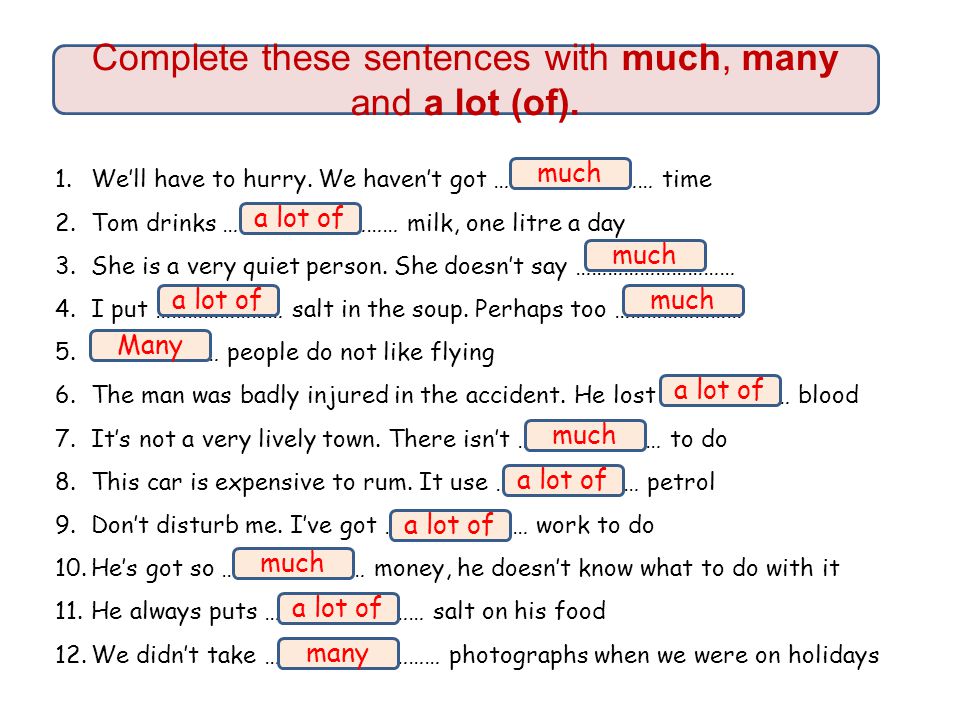 Instead, you should use the air pressure recommended in the vehicle’s owner’s manual or tire information placard label.
Instead, you should use the air pressure recommended in the vehicle’s owner’s manual or tire information placard label.
After knowing the most appropriate pressure for your car tires, you should check whether your tires have such pressure. In addition, checking the pressure of your tires regularly is one of the most important – and most often overlooked – regular maintenance that you should do to ensure your safety and quality of your driving. Monitoring the amount of air in your tires will let you know if you have a small leak and can help you avoid an unexpected flat tire.
Frequently checking your PSI becomes even more important in the fall and winter, when outside temperatures drop and weather conditions fluctuate causing your tires to lose air more quickly. Generally speaking, your tire will gain or lose one PSI for every 10-degree change in temperature, which means if you have a sudden drop of 30 degrees, you could lose three PSI overnight. If your tires were already low, this could cause tire damage, steering problems or even a flat tire.
Some experts recommend that you should check the air pressure every time you refuel; others say once a month is sufficient.
How to check tire pressure properly? Checking tire pressure is easy. You can do it right at home or at the gas station. Just be sure you check the pressure when your tires are cold, or have not been driven in several hours. This will give you the most accurate reading.
The most important piece of equipment you need is an accurate tire pressure gauge. You can find battery-operated digital gauges, or more traditional stick-type gauge found at most gas stations. A good gauge should not set you back more than $15 – a worthwhile investment for a longer life for your tires.
Buy Pressure Gauge at Amazon
Make sure you have your manufacturer’s PSI handy when you are checking your tire pressure, and then follow these steps:
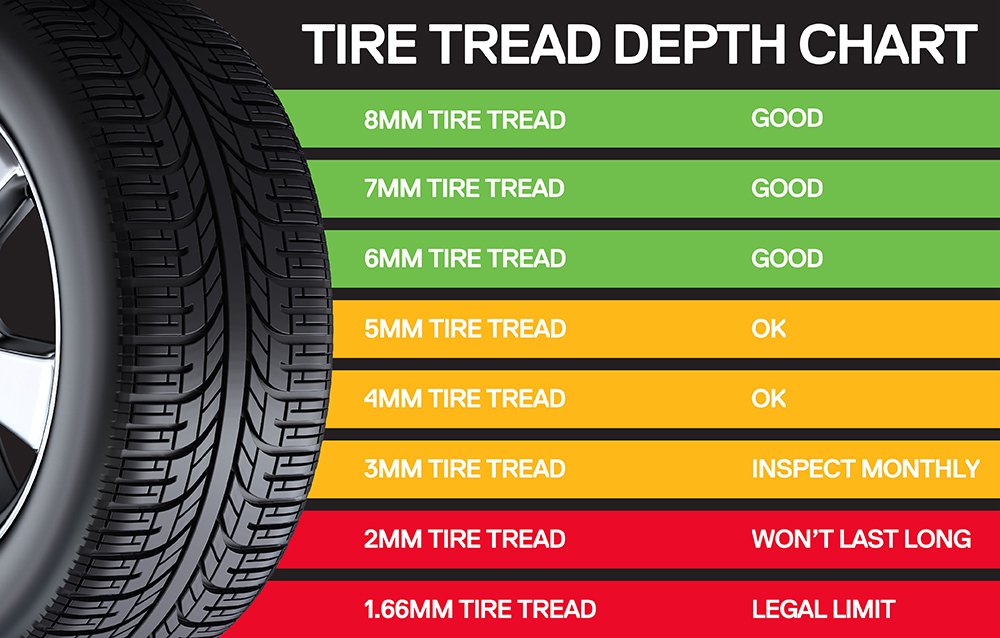
By checking tire pressure once a month, you will get a good idea how they are performing. If your tires are fairly new and continue to leak air, you should consult your dealer or mechanic. You may have a faulty valve or other damage that is difficult to detect which could unfortunately result in the need to replace the tires completely. But with proactive maintenance, you could catch an issue before it becomes a problem, and just end up needing a small repair.
But with proactive maintenance, you could catch an issue before it becomes a problem, and just end up needing a small repair.
Often, it is hard to spot an under-inflated tire until it is too late – in other words, it is completely flat. Of course, you could carry a gauge around at all times to measure the pressure, but that is not exactly convenient. Instead, watch for these signs and symptoms of tires that are under-inflated.
When your tires are under-inflated, your ride can be less smooth than usual. You may even find that it takes longer to brake.
When a tire is not inflated properly, it wears down more quickly. If you notice that one or all of your tires are wearing out faster than usual, it may be because they are under-inflated.
Tires that are under-inflated can make your vehicle quiver and shake, which is not a pleasant driving experience. Under-inflation can even cause tires to become misaligned, with comes with it is own variety of problems.
Under-inflation can even cause tires to become misaligned, with comes with it is own variety of problems.
These are all things that you need to know about recommended pressures of your car tires. After reading this article, you will never confuse about the right pressure of your tires and will know how to check it.
Please share your ideas with me if you have other tips for this.
Alvin Reyes
Alvin Reyes has expertise in automotive evaluation. He collaborated with famous newspapers and is still making efforts in tire review for DrivingPress.com
Written by Steven Schiller
Fact checked by Henry Speciale
Have you ever wondered, “what should my tire pressure be?” Right off the bat, the average is 32 to 35 psi. That’s the answer to the recommended tire pressure for my car question—nothing less and nothing more.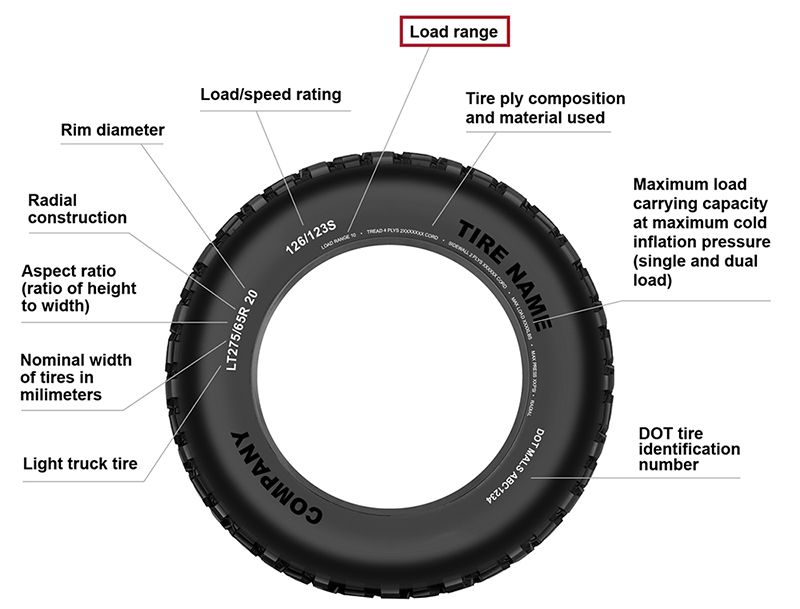 Otherwise, you’ll get a handful of problems on your daily drives.
Otherwise, you’ll get a handful of problems on your daily drives.
Every tire manufacturer gives different normal tire pressure for cars. So it’s best to gather information on your own vehicle’s specifications.
Table of Contents
Knowing the exact values of your tire pressures can go a long way to ensure you’re driving optimally. Scenarios such as a flat tire would be the last thing you need from the lack of information about your tires.
Following the recommended tire psi can also be essential for ride quality. Zeroing in on exact values can give you a smoother ride. Being off by just 1 psi can decrease fuel economy by 0.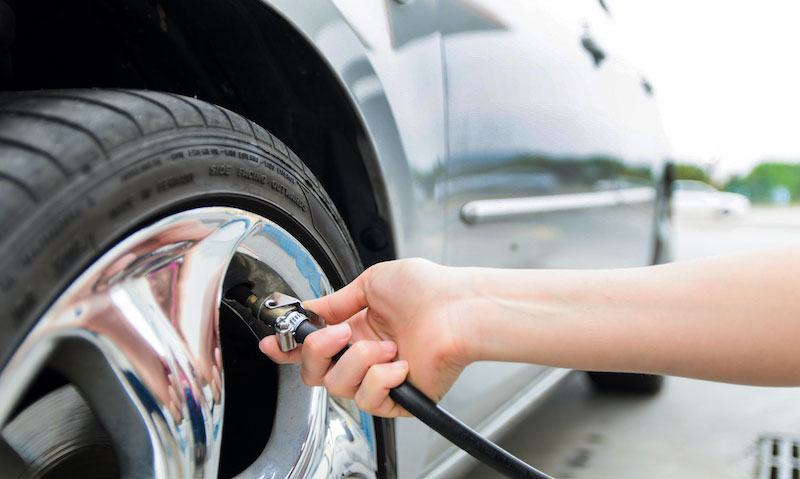 1% while also dropping a tire’s durability by 10%.
1% while also dropping a tire’s durability by 10%.
Coincidentally, when your tire pressure is too high, expect you’re on for a bumpy ride. The extra pressure on your tires could give your car a lot of bounce while driving from too much air. Therefore, I’d like to recommend for you this article to let air out of a tire properly.
External elements and other factors can also play a crucial role when figuring out how much psi you’ll need to ensure your vehicle’s tires are in tip-top driving shape.
Weather and climate should be taken into account when finding good tire pressure. Temperature can influence the pressure inside your tire and throws the exact numbers off.
For high temperatures like in the summer, try lowering the tire pressure from your car by 30 – 32 psi, mainly because high temperatures can increase the pressure inside your tires. Decreasing it essentially off-sets the values and evens everything out.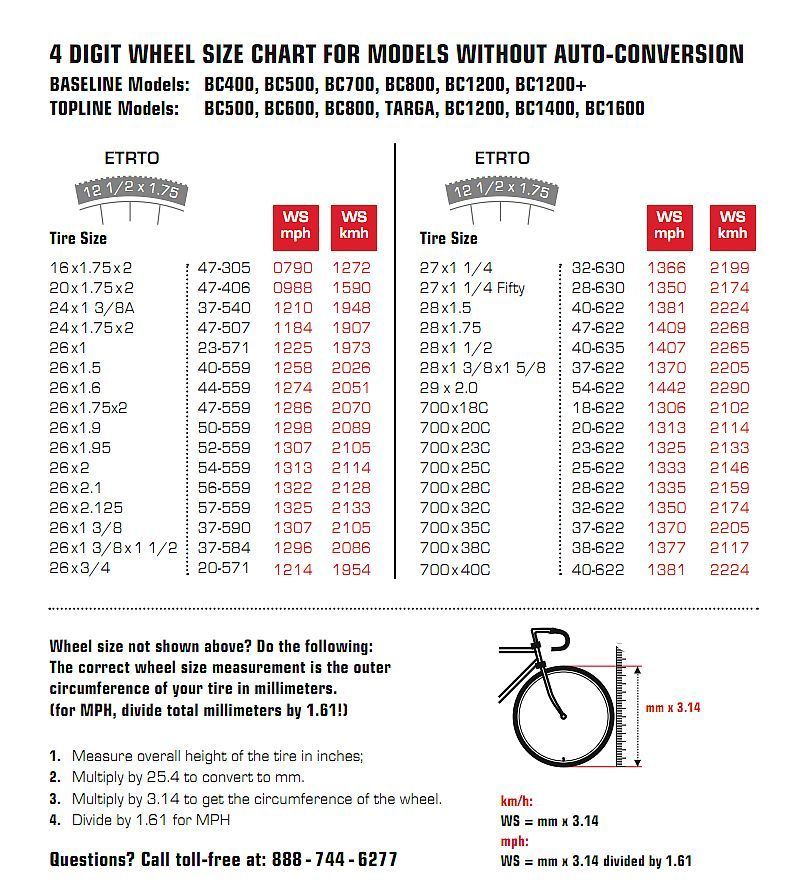
That said, lower temperatures can also lower your tire pressures down.
So increasing to 35 psi may be a good option. Constantly adjust to the average car tire psi, as knowing when and how you manipulate your tire pressures in terms of temperature could mean safer and more fuel-efficient driving.
Every vehicle type’s tire pressure may vary. It is imperative to coincide information with a vehicle type‘s recommended tire pressure chart.
Your tires bolster the weight of your vehicle. Tire pressures must be increased where there is more mass to support from the front and rear.
By this logic, increased tire pressures must be raised where your car’s heavy parts are located, like the engine and the transmission.
Furthermore, if you have multiple passengers in your vehicle’s backseat, consider raising your tire pressures to account for the increased weight. However, you must always still be on the recommended tire pressure ranges.
However, you must always still be on the recommended tire pressure ranges.
Tire pressure gauges can accurately measure tire pressure.
There are different options on what tire pressure gauge to use–digital being the most accurate. However, all tire pressure gauges are just as effective and could get the job done.
Here are other tire pressure gauges that you can use.
Let’s face it. There would always be days when we forgot to bring our tools. While not very accurate, our senses can give us an idea of where our tire pressures are.
Here are methods to consider to check for tire pressure if you don’t have a tire pressure gauge present.
Tire pressure can be very tricky to grasp; however, if you arm yourself with enough knowledge, you can maximize the health and durability of your tires. Not only would this keep you safer and save you the hassle of a flat tire, but it can also save you lots of money on car maintenance.
Not only would this keep you safer and save you the hassle of a flat tire, but it can also save you lots of money on car maintenance.
I always check the recommended tire pressure for my car depending on various factors above, including the manufacturer’s recommended tire pressure.
Remember the multiple ways and factors that can affect proper tire pressures. Adjust accordingly, so you and your car would have a smoother experience.
Categories FAQsI'm Henry, the content writer for PPMC Transport. We build our site entirely on experience and extensive market and customer research. My goal is to create a trusted platform where people can go to determine what is best for their vehicles in terms of safety and convenience. Keep an eye out for our useful guide!
- Speciale Henry
Photo: Shutterstock
adv.rbc.ru
See also
Tires are the only vehicle element that is in constant contact with the road.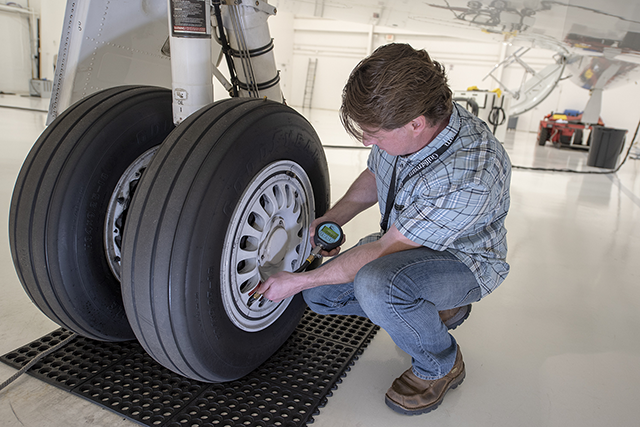 One of the main indicators of their serviceability is pressure. It affects not only fuel efficiency, but also safety.
One of the main indicators of their serviceability is pressure. It affects not only fuel efficiency, but also safety.
As a rule, car manufacturers recommend maintaining tire pressures between 2.0 and 2.8 bar. But in practice there are situations when it is necessary to deviate from this norm.
adv.rbc.ru
Tire pressure should be checked at least once a month, there are several ways to do this. We understand why it is so important to observe the optimal pressure indicator and what it affects.
In this story:
Tire pressure is the resistance with which air "presses" on the inner area of the rubber.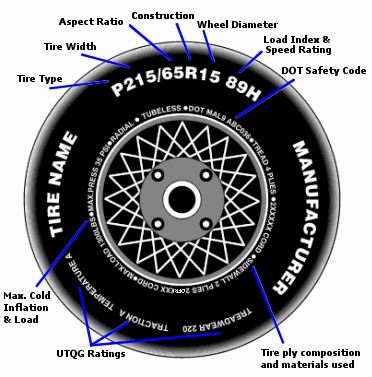 Properly inflated tires will last longer, give you better ride quality and improve your driving safety. If the pressure in the tires is too low or they are pumped over, then the car owner runs the risk of facing a number of problems: from buying new tires to the threat of an accident.
Properly inflated tires will last longer, give you better ride quality and improve your driving safety. If the pressure in the tires is too low or they are pumped over, then the car owner runs the risk of facing a number of problems: from buying new tires to the threat of an accident.
Properly inflated tires will last longer (Photo: Global Look Press)
Under-inflated tires are tires that are below the recommended pressure. In this case, the contact patch of rubber with the road increases, which leads to increased friction or rolling resistance. A worn out outer edge of the tread can visually give out such a problem.
Increased friction with the road can cause the tire to overheat, slip and even burst. In addition, low tire pressure leads to:
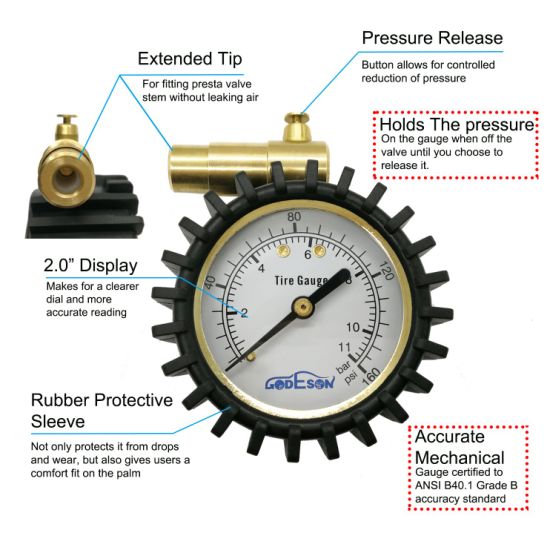
When tires are over-inflated, that is, above the manufacturer's recommended rate, the contact patch decreases. As a result, the main friction with the road is taken over by the central part of the tire.
Excessive tire pressure leads to excessive sensitivity to road irregularities and the risk of tire damage, even destruction. Overinflated tires also cause the following:
Tatyana Eliseeva, an auto expert, master of sports of international class in motorsport, comments
For flat tires:

For overinflated tires:
Excessive tire pressure leads to excessive sensitivity to road irregularities and the risk of tire damage (Photo: Shutterstock)
For each car model, the manufacturer sets its own optimal tire pressure. This indicator depends on the mass of the car, the speed of operation, the number of passengers (partial or full boarding), as well as the load on the trunk [1].
The recommended tire pressure can be found in the vehicle owner's manual or on one of the plates/stickers in the passenger compartment. They can be:

Tire pressure is measured in several units. In Russia, they usually indicate in kg / cm 2 (or atmospheres) and bars (bar). These two indicators are almost equal, which is why they are often used as synonyms:
Foreign models often use pounds per square inch (pound per square inch), or psi:
For convenience, car manufacturers can indicate pressure in two units at once - bar and psi. Thus, the need to independently calculate according to the formulas disappears. Otherwise, you can do this in one of the online calculators or check the table of popular values.
| 2.0 bar | 2.1 bar | 2.2 bar | 2.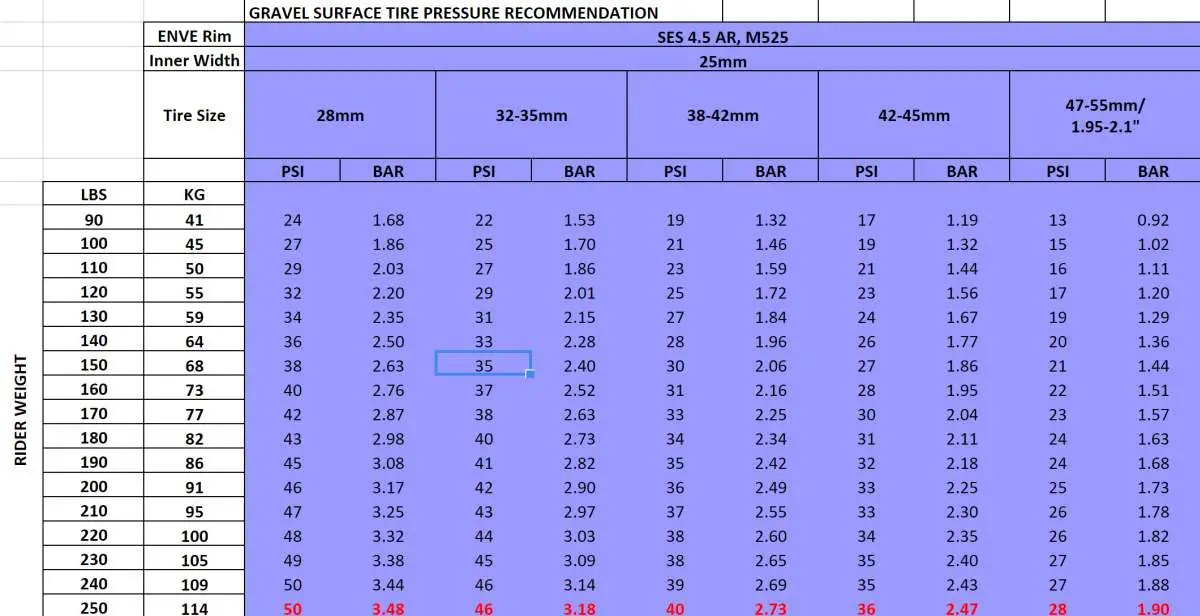 3 bar 3 bar | 2.4 bar | 2.5 bar | 2.6 bar | 2.7 bar | 2.8 bar |
| 29psi | 30psi | 32 psi | 33 psi | 35 psi | 36 psi | 38 psi | 39 psi | 41 psi |
Temperature has a significant effect on tire pressure: when it drops, the pressure in the wheels decreases with it. When the temperature drops by 10 °C, the tire deflates by an average of 0.07–0.14 bar or 1 to 2 psi [2].
Temperature has a significant effect on tire pressure (Photo: Shutterstock)
Summer tires typically use manufacturer's recommended readings. But in winter, it is advised to add about 0.2 bar to these figures [3].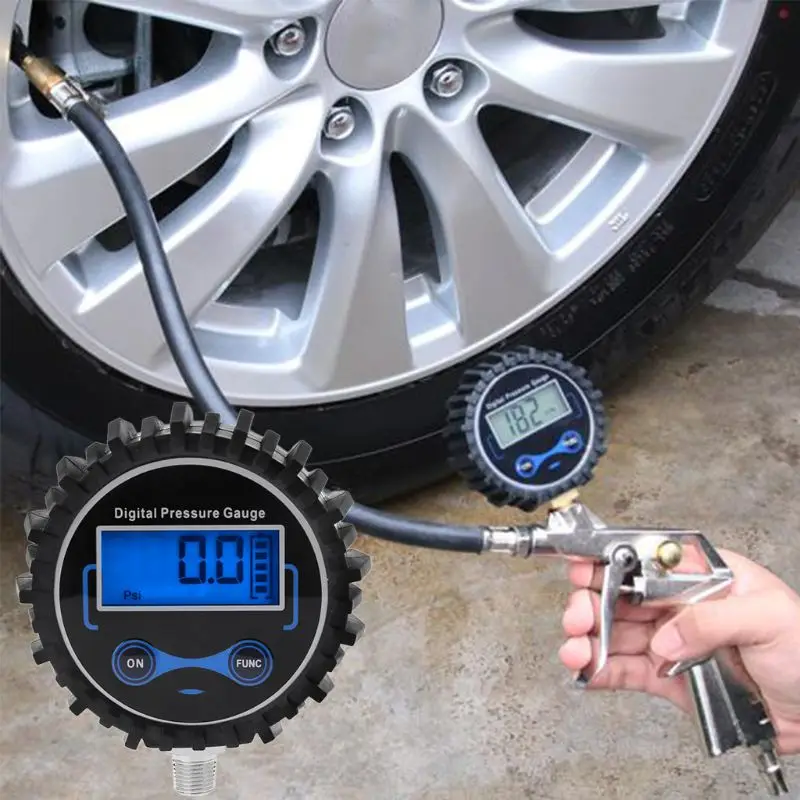
Experts also recommend checking and correcting tire pressure at outside temperature. In the cold season, swapping is best done not in a warm garage, but on the street. In summer, before such a manipulation, you should make sure that some of the wheels of the car were not under the scorching sun, while others were in the shade.
Sometimes the tire pressure needs to be adjusted according to the situation. For example, when the machine is fully loaded or a trailer is towed. For such cases, automakers, as a rule, separately indicate the optimal pressure.
But there are moments that fall into the category of extreme and non-standard (especially if before that the car most often drove around the city). Automotive expert Tatyana Eliseeva analyzed the most common of them.
Leads to heating of the wheels, especially in summer, and therefore it is necessary to follow the manufacturer's recommendations before such a trip.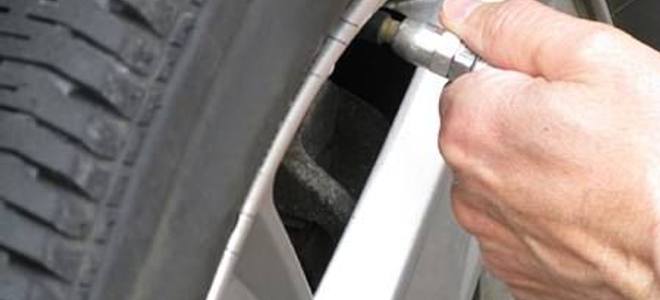 We do not know what we will meet: patched road repairs or heavy rain. After all, for each of these situations, the recommendations will be opposite. Athletes can play with pressure when track conditions are known and engineers can always change the settings. For a long journey, the layman just needs to choose the average.
We do not know what we will meet: patched road repairs or heavy rain. After all, for each of these situations, the recommendations will be opposite. Athletes can play with pressure when track conditions are known and engineers can always change the settings. For a long journey, the layman just needs to choose the average.
Tires must be bled off, especially on sand. The question is for how much? You can bleed up to 0.7 atm, but a not very experienced motorist can slip the wheels with an inaccurate movement, and if the driver turns the steering wheel sharply (for example, trying to catch on the edge of the track), then the tire can come off the disk. And such cases occur regularly.
At near-zero temperatures on packed snow, ice or sludge for new wheels (velcro or studded) it is better to pump the wheels a little so that water and sludge are squeezed out of the central zone of the contact patch and the tread is better have worked.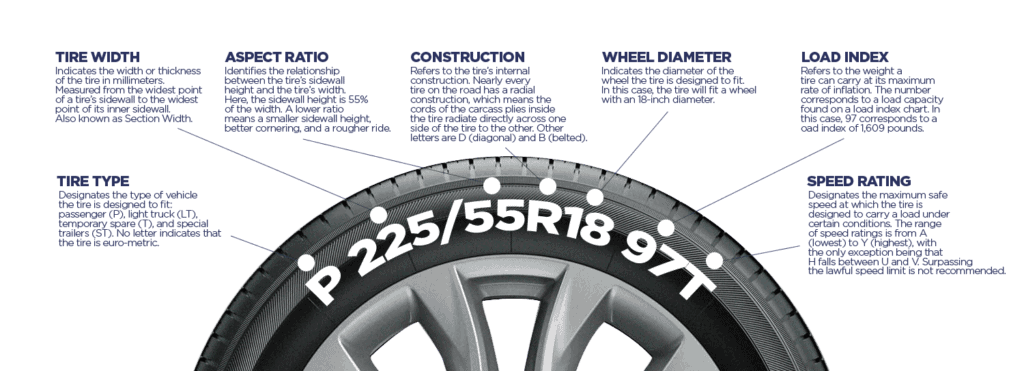 The wheel must be cleared for the tread to work. When it is clogged with snow, the braking distance and traction deteriorate greatly.
The wheel must be cleared for the tread to work. When it is clogged with snow, the braking distance and traction deteriorate greatly.
If the car has worn wheels, but with an acceptable tread depth for winter tires (4 mm), then you should not hope for the correct operation of the tread. Such a low checker no longer pushes the snow. In this case, it is necessary to reduce the pressure in the wheel, thereby increasing the same contact patch.
Photo: Global Look Press
On a country road, the weight of the machine will be an important factor. In this case, we select the pressure according to the load - specific indicators must be viewed on the central pillar of the body. There you will see something like the following recommendation: the more the car is loaded, the higher the pressure in the rear wheels should be.
But a badly broken road can lead to herniations, ruptures and tire damage. Therefore, if we increase the pressure, then we drive on a bad road as calmly and measuredly as possible. Or we slightly deviate from the manufacturer's recommendations and raise the pressure not as much as the manufacturer recommends.
Or we slightly deviate from the manufacturer's recommendations and raise the pressure not as much as the manufacturer recommends.
The main factor in changing the behavior of the wheel is not the pressure drop at altitude, but the presence of a large number of sharp turns and long braking. The tire will heat up not only from the loads, but also from the operation of the brake mechanisms. Therefore, the idea that due to low pressure it is necessary to increase the pressure in the tires is wrong, because the temperature of the wheel has a much greater influence in this case.
The recommended pressure is always given when the tires are cold. This means that the vehicle has not been driven for three hours or has traveled less than 1 mile (or one mile).
There are two ways to check tire pressure: on your own or at a workshop. In the first case, it is enough to use a public pump at a gas station or purchase a pressure gauge. This tire pressure measuring device comes in three types:
This tire pressure measuring device comes in three types:
Another option is to install special pressure control caps on each nipple. Such a gadget works as follows: the upper part of the cap is transparent and, depending on the level of pressure, an indicator of three colors appears in it. Green - the pressure is normal, yellow - the tire is flat, red - the pressure has exceeded the norm.
Photo: Shutterstock
The easiest way to monitor tire pressure is with the automatic TPMS (Tire Pressure Monitor System). Today it is installed on almost all models, and in some countries its presence is a prerequisite for releasing a car from the assembly line.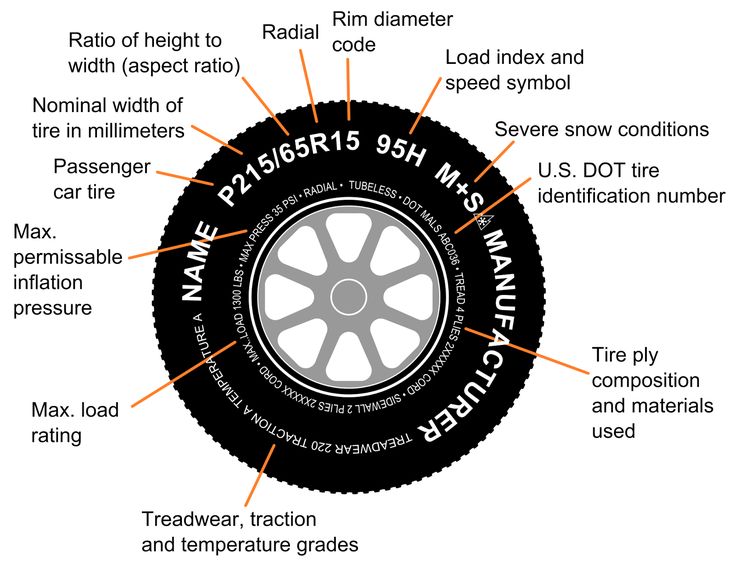
In these systems, the electronics automatically detect changes in the tire, and if the pressure drops below the recommended value, a warning signal lights up on the on-board computer screen.
There are two types of TPMS:
Car manufacturers recommend checking tire pressure every two weeks, but at least once a month. Indeed, even under ideal conditions (for example, the car is idle for a long time), the wheels lose approximately 0.069bar, or 1 psi, per month [4].
The pressure should be monitored before and after a long trip, during a sudden change in temperature (for example, during the first frost or warming), and also after changing tires or driving with a load.
Also, don't forget the spare wheel. Automakers advise servicing it at least as often as the main wheels. As a rule, it has its own optimum pressure values, which can be found in the operating brochure or information table.
| Make and model | Standard load front pressure | Rear pressure at standard load |
| Lada Granta (standard version) | 2.0 bar | 2.0 bar |
| Lada Vesta | 2.2 bar | 2.2. bar |
| Kia Rio | 2.3 bar | 2.3 bar |
| Hyundai Creta | 2.3 bar | 2.3 bar |
| Renault Duster | 2.0 bar | 2.0 bar |
07/23/2021
Tire pressure is an important point during the operation of any vehicle and, in particular, cars. This indicator affects not only the wear rate of products, but also the quality indicators for driving a car, safety and comfort while driving, and the level of fuel fluid consumption. For this reason, every car owner should know how to correctly measure the pressure inside the tires and the tools for this procedure.
This indicator affects not only the wear rate of products, but also the quality indicators for driving a car, safety and comfort while driving, and the level of fuel fluid consumption. For this reason, every car owner should know how to correctly measure the pressure inside the tires and the tools for this procedure.
On the territory of the Russian Federation, the unit of measurement for air pressure for tires is 1 atm = 1 kgf / cm2. The value of this value is often equated to another unit - Bar. But in the US, this value is indicated in PSI, where 1 psi \u003d 1 psi. inch. This state of affairs affects the labeling and differences in the interpretation of indicators for different manufacturers. The designation of the maximum allowable pressure is in Kilopascals, where 1 kPa = 6.895psi
At the same time, when discussing the correct selection of the desired pressure value inside the tires, it is worth considering not the brand of tires, but the recommendations from the manufacturer of a particular brand, model and modification of the car. But not vice versa.
But not vice versa.
Of course, special devices are used to understand the correct value and, at least, the current tire pressure reading. Manometers come in different types:
But besides this, other types of devices will also help:
It should be noted separately that tire pressure measurements are carried out before the upcoming trip or after 5-8 hours of vehicle inactivity.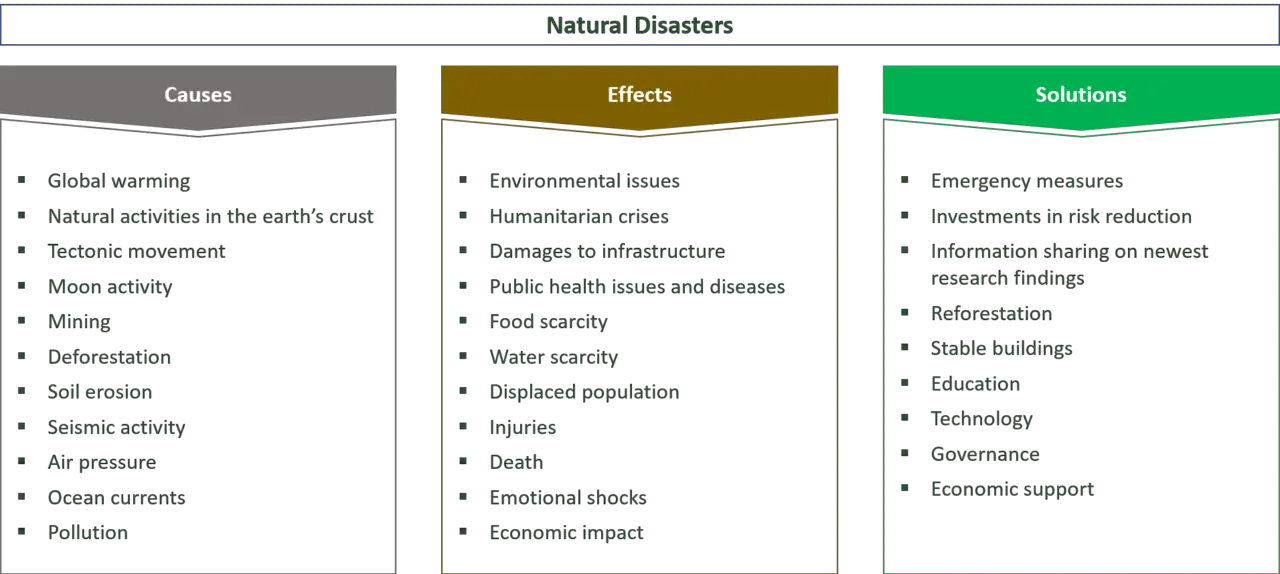
For the convenience of car owners, manufacturers indicate information about the required level of pressure on the front and rear wheels in such a way that you can always check it at the right time. Sometimes reference plates are located on the B-pillar or on the inner cap of the gas tank, as well as on the end of the door on the driver's side.
In addition to the fact that all tires are divided into 3 main types: all-season, summer and winter, the inflation process in summer and winter will differ. This is due to the fact that inside any closed space, a pressure change of 0.1 atm occurs with temperature fluctuations for every 8-10 degrees Celsius.
In summer, one should take into account the heating of the road surface, which affects the increase in grip and friction of coated tires. Therefore, in this case, it is important to avoid the likelihood of tire explosions and other emergencies. When inflating tires in summer, the following factors related to tire pressure should be considered:
When inflating tires in summer, the following factors related to tire pressure should be considered:
The pressure drop in winter is caused by the cooling and cooling of road surfaces. This leads to a corresponding decrease in the stability of the tires on the road while driving. From here follow the basic principles of tire inflation in winter:
 1 atm;
1 atm; Regardless of the level of professionalism in car ownership, experts recommend using a pressure gauge at least once a month and before long trips. If there are frequent temperature fluctuations in the weather in any of the seasons, the interval should be reduced to 2 weeks.
With reduced tire pressures, contact between the wheel and the road surface occurs only at the extreme points. In visual terms, sometimes it is simply impossible to determine this, but this situation leads to the following negative consequences:
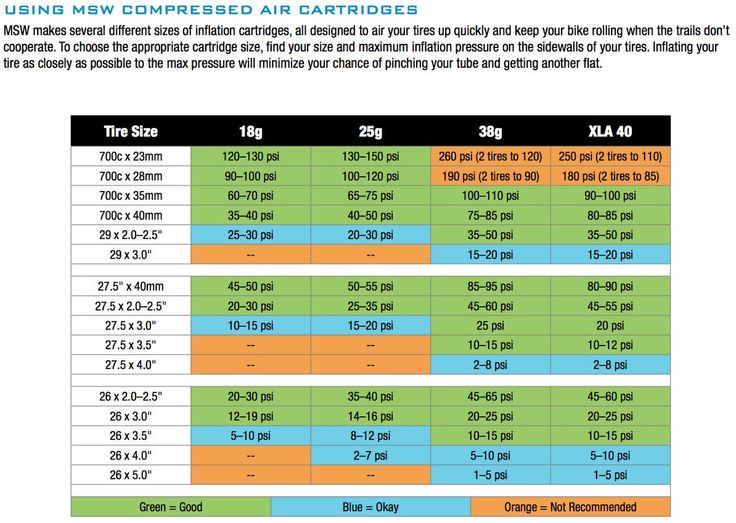
When the required tire pressure is exceeded, only the central part of the wheels comes into contact with the road. This entails the following consequences:
But even more dangerous situations and consequences arise with different pressures in all 4 or at least 2 tires. Indeed, in this case, there is a roll towards a less inflated wheel. In such cases, the consumption of fuel fluid increases up to 10%.
Despite this, attention should be paid to cases in which pressure deviations in car tires by 10-12% help to help out on bumps, when passing surfaces with sand, viscous mud, and wet grass. That is, it is possible to increase the permeability. Pumping in a small range will help while moving on highways at high speeds.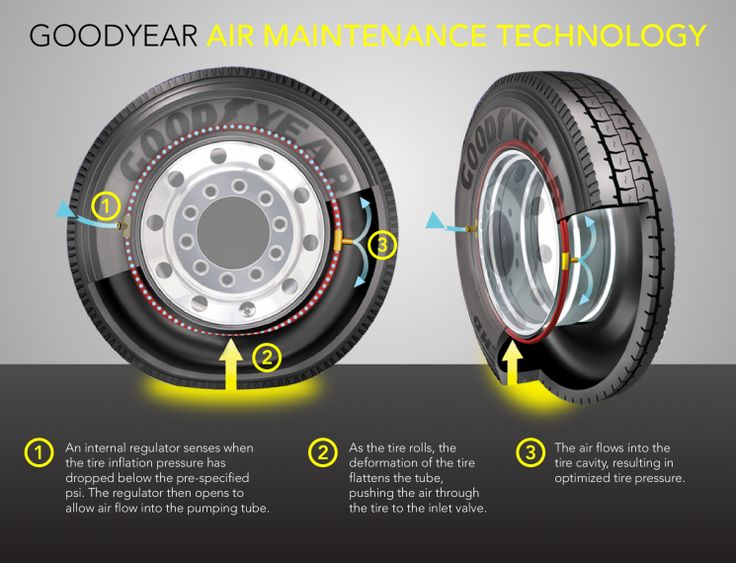 Sometimes a slight increase in pressure only on the rear tires allows you to carry heavy loads with the least problems.
Sometimes a slight increase in pressure only on the rear tires allows you to carry heavy loads with the least problems.
It is important to note that factory standards today are verified data that you should definitely focus on. They undergo numerous checks and tests, and the level of competition between brands makes it necessary to improve all indicators and the testing process. If you could not find recommendations from your car brand manufacturer, below we bring to your attention a table with the necessary data:
| 25 | thirty | 35 | 40 | 45 | 50 | 55 | 60 | 65 | 70 | ||||||||||
| Size | kgf/cm2≈BAR | Size | kgf/cm2≈BAR | Size | kgf/cm2≈BAR | Size | kgf/cm2≈BAR | Size | kgf/cm2≈BAR | Size | kgf/cm2≈BAR | Size | kgf/cm2≈BAR | Size | kgf/cm2≈BAR | Size | kgf/cm2≈BAR | Size | kgf/cm2≈BAR |
| 285/25-R20 | 2. | 265/30-R19 | 2.8 | 215/35-R18 | 2.8 | 195/40-R17 | 2.8 | 165/45-R15 | 2.5 | 165/50-R15 | 2.4 | 155/55-R14 | 2.2 | 185/60-R14 | 2.0 | 175/65-R13 | 1.9 | 175/70-R13 | 1.9 |
| 295/25-R22 | 2.9 | 275/30-R19 | 2.8 | 225/35-R18 | 2.8 | 205/40-R17 | 2.8 | 195/45-R15 | 2.6 | 195/50-R15 | 2.4 | 165/55-R14 | 2. | 175/65-R14 | 2.0 | ||||
| 285/30-R19 | 2.8 | 255/35-R18 | 2.7 | 215/40-R17 | 2.7 | 195/45-R16 | 2.5 | 205/50-R15 | 2.3 | 165/55-R15 | 2.1 | ||||||||
| 245/30-R20 | 2.9 | 265/35-R18 | 2.6 | 235/40-R17 | 2.6 | 205/45-R16 | 2.4 | 225/50-R15 | 2. | 185/55-R15 | 2.1 | ||||||||
| 275/30-R20 | 2.9 | 275/35-R18 | 2.5 | 245/40-R17 | 2.5 | 205/45-R17 | 2.7 | 195/50-R16 | 2.4 | 195/55-R15 | 2.1 | ||||||||
| 255/30-R20 | 2.9 | 215/35-R19 | 2.8 | 255/40-R17 | 2.5 | 215/45-R17 | 2.6 | 205/50-R16 | 2. | 205/55-R16 | 2.2 | ||||||||
| 245/30-R22 | 2.9 | 225/35-R19 | 2.8 | 215/40-R18 | 2.8 | 225/45-R17 | 2.5 | 215/50-R16 | 2.3 | 215/55-R16 | 2.3 | ||||||||
| 265/30-R22 | 2.9 | 235/35-R19 | 2.8 | 225/40-R18 | 2.7 | 235/45-R17 | 2.4 | 225/50-R16 | 2. | 225/55-R17 | 2.3 | ||||||||
| 285/30-R22 | 2.9 | 245/35-R19 | 2.8 | 235/40-R18 | 2.6 | 215/45-R18 | 2.4 | 205/50-R17 | 2.4 | ||||||||||
| 255/35-R19 | 2.8 | 245/40-R18 | 2.6 | 225/45-R18 | 2.4 | 215/50-R17 | 2.4 | ||||||||||||
| 265/35-R19 | 2. | 265/40-R18 | 2.6 | 235/45-R18 | 2.6 | 225/50-R17 | 2.4 | ||||||||||||
| 275/35-R19 | 2.8 | 275/40-R18 | 2.8 | 245/45-R18 | 2.5 | 225/50-R18 | 2.5 | ||||||||||||
| 245/35-R20 | 2.9 | 225/40-R19 | 2.8 | 255/45-R18 | 2. | 235/50-R18 | 2.5 | ||||||||||||
| 255/35-R20 | 2.9 | 245/40-R19 | 2.9 | 225/45-R19 | 2.8 | ||||||||||||||
| 275/35-R20 | 2.9 | 255/40-R19 | 2.9 | 245/45-R19 | 2.7 | ||||||||||||||
| 275/40-R19 | 2. | ||||||||||||||||||